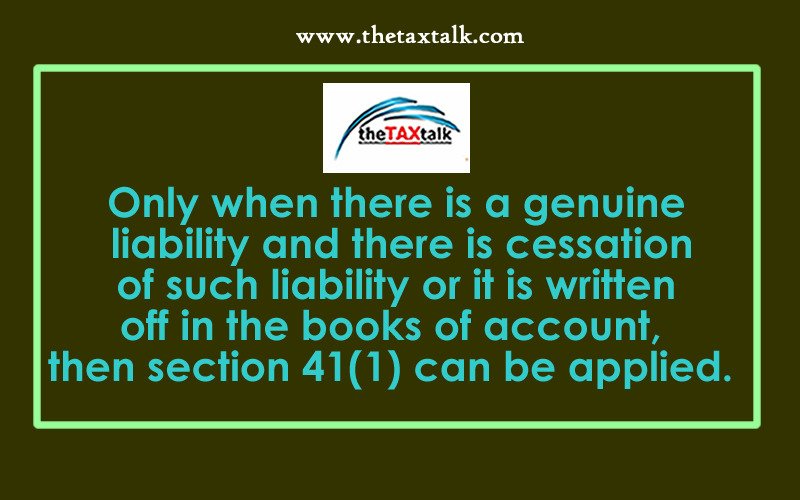![]()
Only when there is a genuine liability and there is cessation of such liability or it is written off in the books of account, then section 41(1) can be applied.
Short Overview Only when there is a genuine liability and there is cessation of such liability or it is written off in the books of account, then section 41(1) can be applied. Therefore, question of cessation of non-existent and bogus liability did not arise, hence, section 41(1) could not be applied and hence, addition was deleted.
AO made addition under section 41(1) towards outstanding liabilities expenses as appearing in the balance sheet as same were bogus and non-existent.
It is held that Only when there is a genuine liability and there is cessation of such liability or it is written off in the books of account, then section 41(1) can be applied. Therefore, question of cessation of non-existent and bogus liability did not arise and hence, section 41(1) could not be applied and, hence, addition was deleted.
Decision: In assessee s favour.
Applied: Nama Properties Ltd. v. Dy. CIT, Cir-2(1), Hyderabad, ITA No. 1831/Hyd/2017 for the assessment year 2012-13 : 2020 TaxPub(DT) 2525 (Hyd-Trib).
IN THE ITAT, KOLKATA BENCH
J. SUDHAKAR REDDY, A.M. & A.T. VARKEY, J.M.
Green Star Corporation v. ACIT
ITA No. 2463/Kol/2017
9 April, 2021
Appellant by: Ankit Jalan, Advocate, learned AR
Respondent by: Dhrubajyoti Ray, JCIT, learned DR
ORDER

